Milwaukee’s New Tool To Fight Reckless Driving? Public Art
Rolling sculpture aims to provoke, encourage people to drive safer.
On its face, it seems absurd.
What good is public art going to do in an urgent quest to end reckless driving?
But Milwaukee’s first public artist-in-residence, Sarah Davitt, has taken a solution-focused approach with a work she calls “The Moving City,” a pickup truck covered in intricately carved traffic cones.
The goal, Davitt told Urban Milwaukee, isn’t to create “art with a capital A,” but to inspire behavior change.
The underlying strategy is to meet people where they are. “We want to make sure we are speaking with people, not at them,” said Davitt in a press conference Wednesday morning at Red Arrow Park to unveil the rolling sculpture.
The sculpture will be deployed at festivals and other events where city staff can try to educate the public about the safety benefits of driving safer and slower.
Messages about positive behavior, in three languages (English, Spanish, Hmong), are interspersed with 50 hand-carved images of Milwaukee buildings from all across the city, illustrating that the problem isn’t confined to one area.
“Every time I talk about this, I try to remove ‘reckless’ from the topic because ‘reckless’ is a word that is undefinable,” said Davitt. “It allows you to point a finger at everybody else. It doesn’t allow you to point a finger at yourself and say ‘what am I doing?'”
The addition of the public art piece doesn’t mean the city is giving up on enforcement or engineering.
“We know that it takes more than just modified roadways to address reckless driving,” said Department of Public Works (DPW) Commissioner Jerrel Kruschke.
The city has made several million dollars worth of street modifications to calm traffic or block dangerous, illegal behavior like passing in the parking lane.
The focus started in late 2021 when Mayor Cavalier Johnson declared reckless driving a public health crisis as his first act in office. And the effort grew, in 2022, when the Common Council approved a Vision Zero strategy of eliminating traffic deaths.
“We are committed to addressing reckless driving in this city, doing it through education, doing it through enforcement, doing it through engineering and doing it through creative solutions like ‘The Moving City,'” said Johnson.
On the enforcement side that’s included enhanced fines and penalties for offenses, suing frequent violators in civil court and advocating for state law changes to allow red light cameras in addition to increasing the number of police officers through Act 12.
“I’ve been very consistent, very clear, when someone causes death, harm and destruction, there should be a price to pay,” said the mayor.
On the education side, a “Speeding, We Can Live Without It” outreach campaign was launched earlier in the summer. Johnson said the city works to expand its outreach efforts to connect youth with programs that are designed to deter violence. A move to lower speed limits on some streets is also pending before DPW.
And now, there’s public art.
“The goal of ‘The Moving City’ is to catch the public’s attention,” said Kruschke. “This is just one further tool we now have at our disposal to address reckless driving and we will use any tool we have available to address this epidemic.”
Davitt was hired by the Milwaukee Arts Board, a citizen-led committee, in March 2023. She told Urban Milwaukee she spent the first several months researching the issue, and then spent time studying possible materials.
That included a visit to Lakeside Plastics in Oshkosh to see how traffic cones are made. The company ended up donating approximately $5,000 in materials. Davitt, who has a background as a print maker, was able to learn how she would be able to carve the cones and scrap pieces. At night the piece can be backlit to highlight certain aspects.
Members of the Milwaukee Makerspace and city employees helped create the piece.
The total cost for the project, according to a city representative, was $88,000. That included funding for Davitt and a staff liaison, as well as materials and subcontractors.
The funding came from arts board’s annual city budget allocations. A $25,000 annual allocation for new art was paired with unspent art restoration funding from several recent years. The Greater Milwaukee Foundation contributed $20,000 to support the staff liaison.
The truck, which can be driven, was an unclaimed vehicle at the city tow lot that was due to be auctioned off.
“We are thrilled to see the outcome of ‘The Moving City’ project,” said arts board member Tina Klose.
The speakers were joined at the press conference by council members Jonathan Brostoff and Sharlen P. Moore, Vision Zero administrator Jessica Wineberg and a handful of arts board members.
You can track where “The Moving City” will appear next by visiting the city’s Vision Zero webpage. It will be on display Wednesday night at Vel R. Phillips Plaza, just outside of the Milwaukee Night Market.
Photos
Press Conference
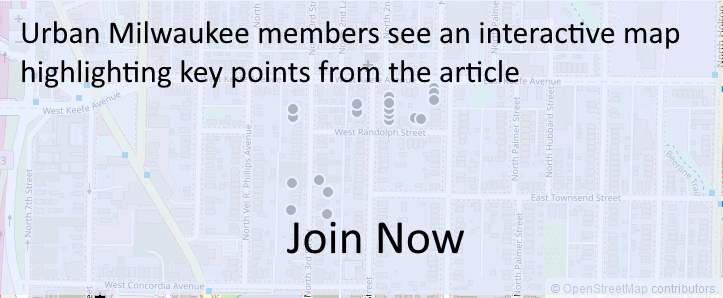
Existing members must be signed in to see the interactive map. Sign in.
If you think stories like this are important, become a member of Urban Milwaukee and help support real, independent journalism. Plus you get some cool added benefits.
Political Contributions Tracker
Displaying political contributions between people mentioned in this story. Learn more.
- March 4, 2016 - Cavalier Johnson received $35 from Sharlen P. Moore
City Hall
-
Council Blocked In Fight To Oversee Top City Officials
 Dec 16th, 2025 by Jeramey Jannene
Dec 16th, 2025 by Jeramey Jannene
-
Latest Effort to Adopt New Milwaukee Flag Going Nowhere
 Dec 3rd, 2025 by Jeramey Jannene
Dec 3rd, 2025 by Jeramey Jannene
-
After Deadly May Fire, Milwaukee Adds New Safety Requirements
 Dec 2nd, 2025 by Jeramey Jannene
Dec 2nd, 2025 by Jeramey Jannene
Transportation
-
Congestion Pricing Cuts Air Pollution in New York City
 Dec 14th, 2025 by Jeff Wood
Dec 14th, 2025 by Jeff Wood
-
FTA Tells Milwaukee to Crack Down on Fare Evasion — Even Where Fares Don’t Exist
 Dec 12th, 2025 by Graham Kilmer
Dec 12th, 2025 by Graham Kilmer
-
Will GOGO’s Bus Service Ever Get Going?
 Dec 9th, 2025 by Jeramey Jannene
Dec 9th, 2025 by Jeramey Jannene


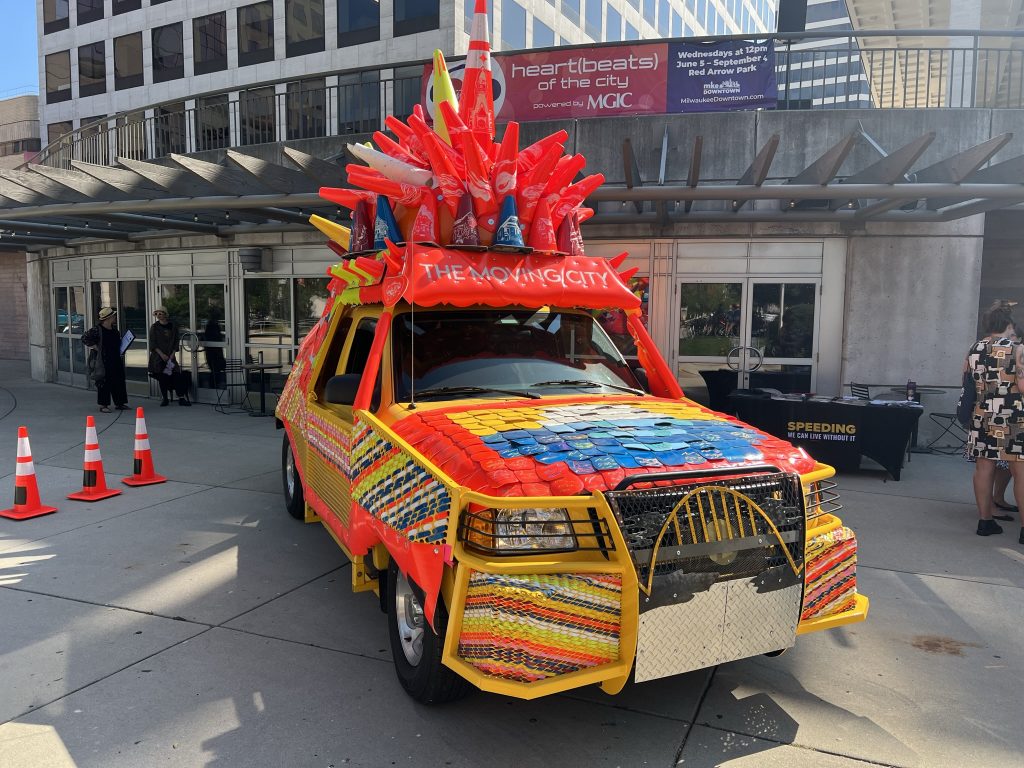
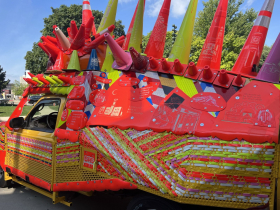
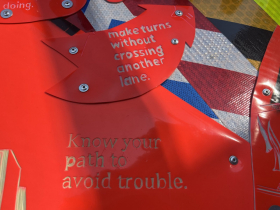
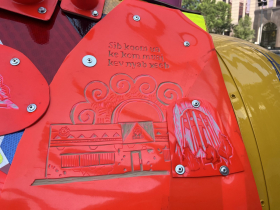
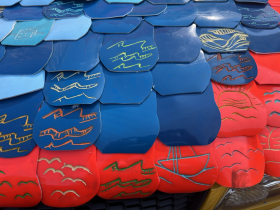
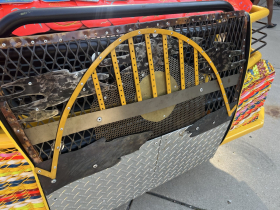
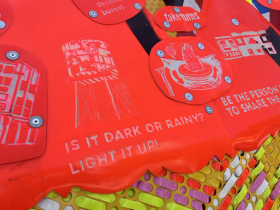

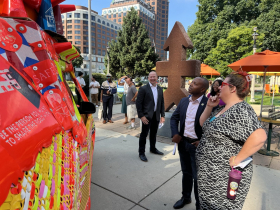
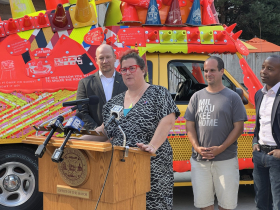



















I think Oscar Mayer beat her to it.
Education is an important part of prevention, and capturing peoples’ attention is a part of that. So, why not?!
Cute but what a waste of time and money. If you were directing this at grade school children, I’m sure they would enjoy this. Let’s do something real to prevent reckless driving–and that involves accountability for their actions.
Seriously people? This is nothing more than a feel good attempt at making it appear that someone is doing something. Speed signs, stop signs, and even hundreds of thousands of dollars spent on bump outs, plastic cones, broken planters, and narrowing access to our streets hasn’t worked…and you think this will? Here is a hint people. Ticket books. They are cheap, and easily used (when you have enough Police Officer’s assigned to write them). Just make sure that the state and municipal judges have that part of their anatomy to enforce them with fines and/or jail time.
Ridiculous!
Clarification of my previous comment – when I suggested tighter control over funding.
I was NOT suggesting that politicians’ control of art is generally a good thing.
Artistically, the piece is not on my wavelength. Financially, it is an attention-getting tool in a larger safety program.
The price of the art itself is subject to cost/benefit analysis,
the same way an advertiser would weigh Commercial Artwork’s contribution to an ad campaign.
I presume the dollars mentioned are for the entire program – construction transport, storage, publicity, printed handouts, etc. The ‘job’ of the piece is to attract and focus attention on safety.
IF enough people see it, and are influenced by it’s applied messages,
it SUCCEEDS, my artistic opinion be damned!
Still think this artistic investment was a waste of time and money. Install street cameras to catch reckless drivers. We already have an awareness builder–all the cars wrapped around trees and driving into buildings.
This approach reaches drivers at a time when they’re not busy concentrating on avoiding trees, buildings, and drivers who are inclined to hit them.
Getting wrapped up in things at the end of their commute,
drivers can easily forget to contact their officials.
This encounter could and should provide a suggestion box, petitions to sign, handout reminders
with links to appropriate websites, petitions etc.or preaddressed, prepaid postcards to officials.
@Marty Ellenbecker – Just to be clear, I was not thinking about you when I was criticizing the call for elected official oversight of the arts budget. It was directed at the Alder.
Your posts are the ones I always look forward to reading because you are clear and smart, and also seem to be drawing from a pool of knowledge and experience I don’t have. (Like, maybe “functional knowledge,” how things do or should work.?)
Happy Labor Day!
FF
@ Franklin Furter – Thanks for the complement. No offense or issue taken with your comments. There were 2 articles on this topic, each with their own set of comments.
My main point is that when publicly funding art works, politicians and officials should consider cost/benefit scenarios, not impose their own judgment on the art’s merit.
I was once a member of MARN. I opposed their plan to put artwork in the S. 6th St. roundabout. No design or budget existed yet, but I feared putting a distraction/visual obstruction in the middle of an unfamiliar and poorly designed road feature.
Happy Labor Day to you too.